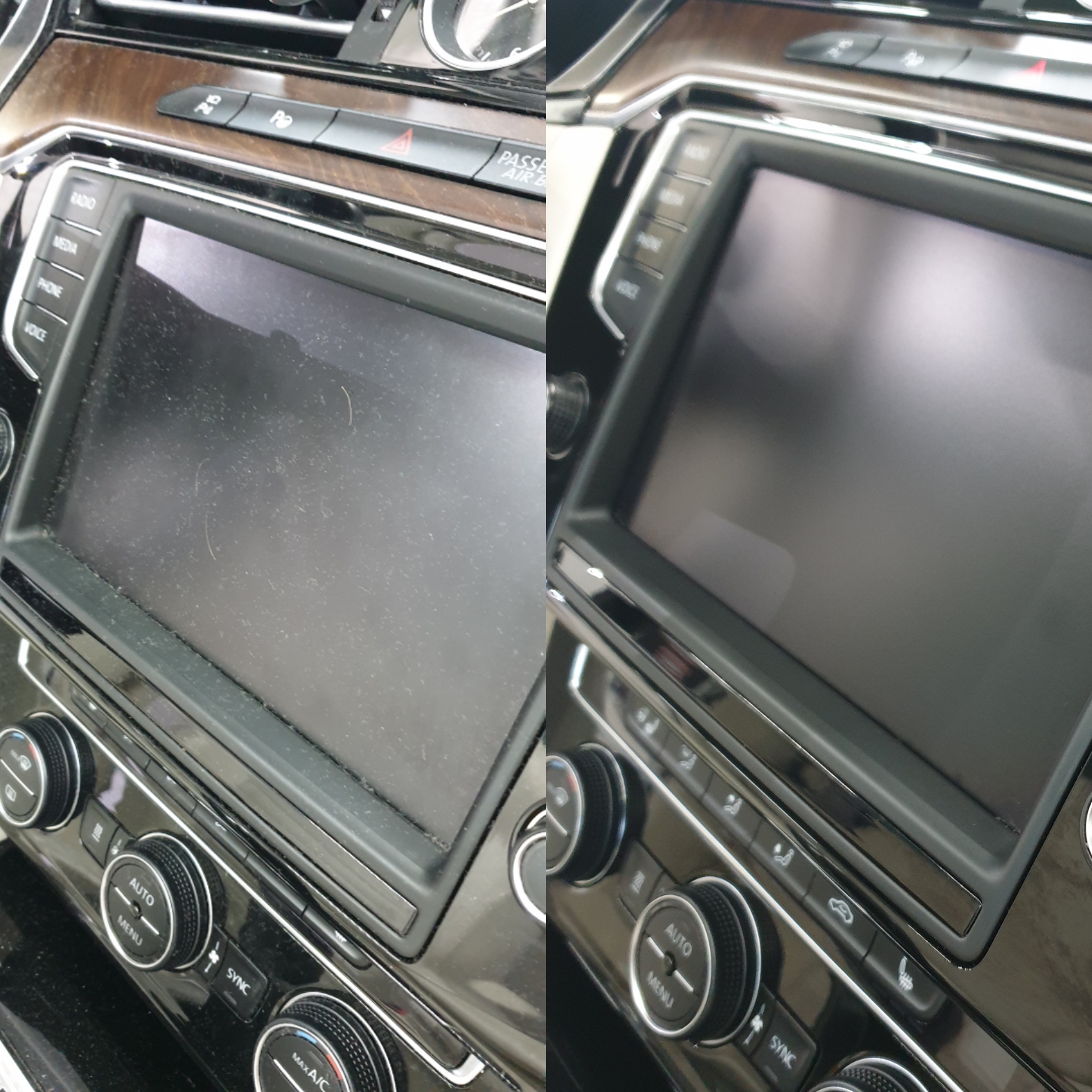“Nano-sponges are all the rage these days. We sometimes use them too. But never, ever on leather. Its micro-abrasive properties damage the transparent varnish, so it can easily happen that the colour will fade the next time you clean it. You should only ever use a brush, micro-fibre cloths and specialised cleaning products on leather.

Various ceramic coatings are used to give the exterior paint maximum protection. But similar products exist for the interior, such as products for textiles – seat covers, carpets – that apply a protective film to the fibres, preventing liquid and grime absorption while protecting the textile against UV radiation and fading. Abrasion-resistant coatings can be applied to leather. Ceramic coatings, or possibly polyurethane protective film, are applied to gloss-finish plastic and displays. It’s important to understand that all the steps mentioned here are intended to slow down wear-and-tear, not protect the materials forever as some advertising claims.






























